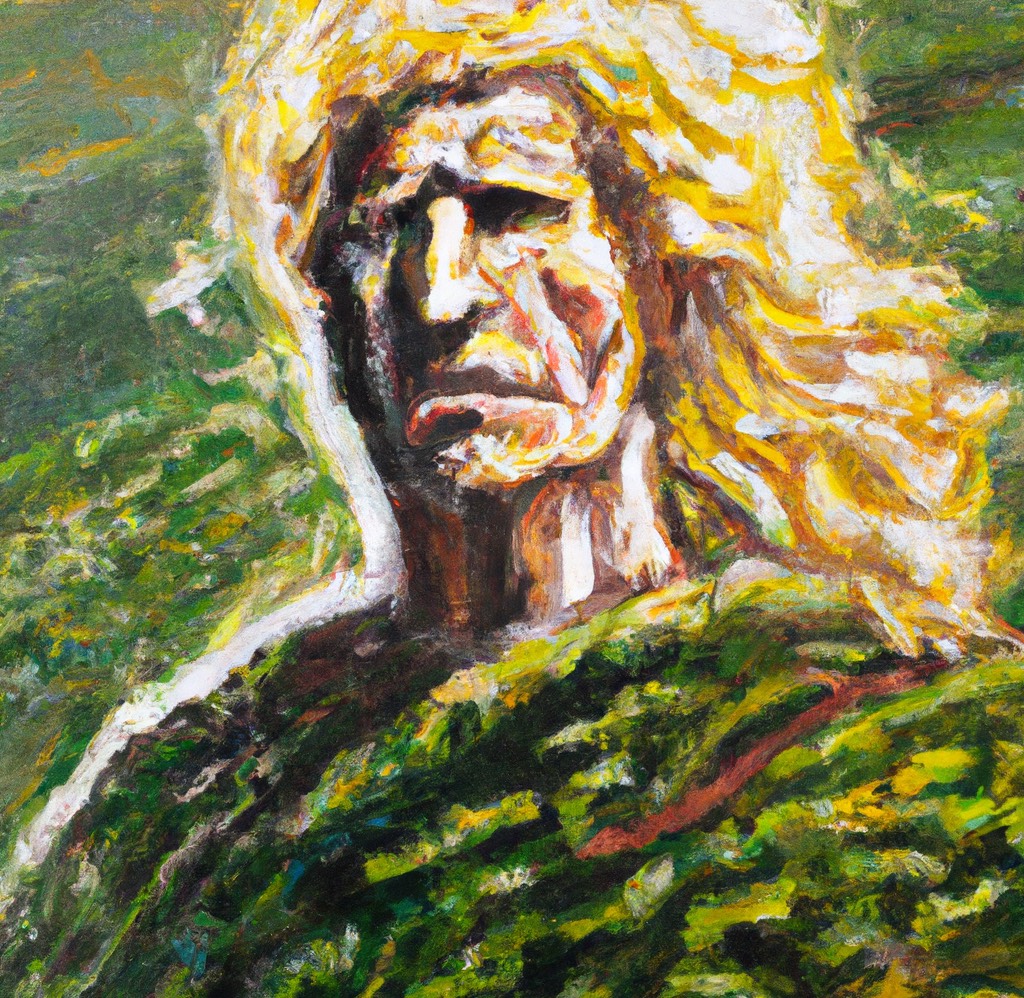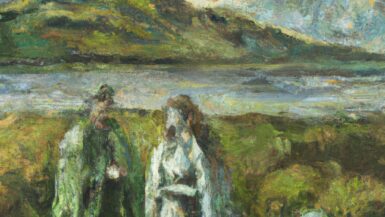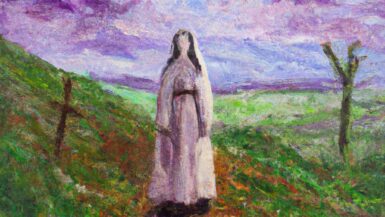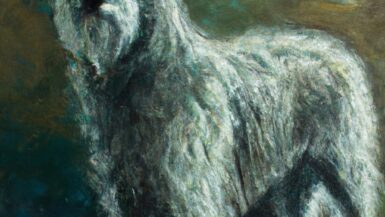Fionn Mac Cumhaill, a legendary figure in Irish mythology, was the renowned leader of the Fianna, a band of mighty warriors that protected Ireland from external threats. His pursuit of knowledge and wisdom was a central theme in many of his adventures, making him a fascinating character in Celtic folklore. This article delves into the life and legends of Fionn Mac Cumhaill, providing a comprehensive overview of his origins, exploits, and lasting legacy.
Origins of Fionn Mac Cumhaill
Birth and Parentage
Fionn Mac Cumhaill, born as Demne, was the son of Cumhaill, the leader of the Fianna, and Muirne, the daughter of the druid Tadg mac Nuadat. Fearing for the child’s safety due to Cumhaill’s death in battle and the enmity of his enemies, Muirne entrusted her son to be raised in secrecy by the druidess Bodhmall and the warrior Liath Luachra.
The Naming of Fionn
The name Fionn, meaning “fair” or “bright,” was given to Demne after he killed a dangerous supernatural creature known as Aillen mac Midgna, who had terrorized the people of Tara for years. With his newfound fame, Demne adopted the name Fionn Mac Cumhaill, honoring his father and signifying his bright future as a great hero.
The Education and Abilities of Fionn Mac Cumhaill
Training with the Druidess Bodhmall and the Warrior Liath Luachra
Fionn’s education began under the tutelage of the druidess Bodhmall and the warrior Liath Luachra, who taught him the arts of combat, hunting, and the ways of the druids. This training equipped Fionn with the skills necessary to become a formidable warrior and the leader of the Fianna.
Gaining Wisdom from the Salmon of Knowledge
One of the most famous stories in Fionn’s legend is his encounter with the Salmon of Knowledge. According to the tale, Fionn was apprenticed to the wise poet Finnegas, who had spent years trying to catch the salmon that possessed all the world’s knowledge. Fionn eventually caught the salmon and was instructed to cook it for Finnegas but not to eat it. However, as Fionn cooked the fish, he burned his thumb and instinctively put it in his mouth to soothe the pain. This simple act transferred the wisdom of the salmon to Fionn, making him one of the wisest men in Ireland.
Key Events in the Life of Fionn Mac Cumhaill
The Rise to Leadership of the Fianna
Fionn’s journey to becoming the leader of the Fianna was filled with many trials and challenges. After proving his worth by defeating Aillen, Fionn was welcomed into the ranks of the Fianna. He then went on to avenge his father’s death by killing his murderer, Goll Mac Morna. With Goll’s defeat, Fionn claimed the leadership of the Fianna and ushered in a golden age of heroism and prosperity.
The Pursuit of Diarmuid and Gráinne
One of the most famous tales involving Fionn Mac Cumhaill is the love triangle between himself, his loyal warrior Diarmuid Ua Duibhne, and Gráinne, the daughter of the High King of Ireland. Gráinne was betrothed to Fionn but fell in love with Diarmuid instead. The two eloped, setting off a long and arduous pursuit by Fionn and the Fianna. This story highlights themes of love, betrayal, and loyalty.
The Battle of Gabhra and the Fall of the Fianna
The Battle of Gabhra, fought between the Fianna and the forces of the High King of Ireland, marked the end of the Fianna’s prominence in Irish mythology. Fionn’s son, Oisín, and grandson, Oscar, played crucial roles in the battle, with Oscar killing the High King at the cost of his own life. Fionn’s grief over Oscar’s death and the loss of many Fianna warriors signified the decline of the once-great band of heroes.
The Legacy of Fionn Mac Cumhaill
Influence on Irish Culture
Fionn Mac Cumhaill’s tales have been passed down through generations, leaving a lasting impact on Irish culture and identity. His stories often emphasize wisdom, loyalty, and bravery, inspiring countless retellings and reinterpretations. Fionn’s legacy is also celebrated through numerous monuments, such as the Giant’s Causeway, which is said to have been built by Fionn to cross the sea to Scotland.
Fionn Mac Cumhaill in Modern Literature
Fionn’s stories have been adapted and reimagined in modern literature, showcasing his continued relevance and appeal. Notable examples include James Stephens’ “Irish Fairy Tales” (1920), which retells many of Fionn’s adventures, and Flann O’Brien’s “At Swim-Two-Birds” (1939), where Fionn appears as a character. Contemporary authors, such as Morgan Llywelyn and Micheál Ó Conghaile, have also explored Fionn’s legend in their works.
Fionn Mac Cumhaill in Popular Culture
Fionn Mac Cumhaill’s influence extends into mainstream popular culture, appearing in comic books, video games, and television series. For instance, Fionn and the Fianna are featured in the Irish animated series “The Magical Adventures of Quasimodo” (1996), and Fionn has been adapted into characters for the Fate/ series of Japanese visual novels and anime.
Fionn Mac Cumhaill, the legendary leader of the Fianna, remains a captivating figure in Irish mythology. His pursuit of knowledge, wisdom, and heroism is central to his many adventures, setting him apart from other mythological heroes. From his ancient origins to his modern-day adaptations, Fionn Mac Cumhaill’s stories continue to inspire and entertain audiences around the world, ensuring that his legacy will endure for generations to come.






Leave a reply